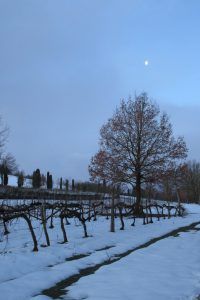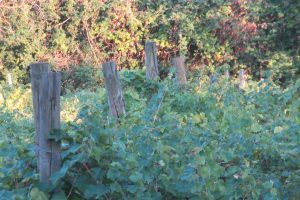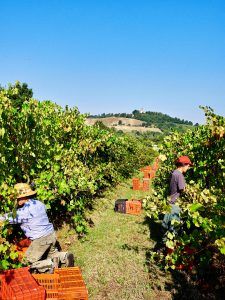Diary 2020
The very hot winter made us think of an early harvest and a vintage with high sugar content, the hailstorm told another story. A decimated production greatly complicated the disease prevention work but at the same time it enhanced the varietal characteristics of the wines.
The vintage

his alarming climate change requires everyone to make a radical and very fast change in lifestyle.
The second warmest winter of the last two centuries, it’s how 2020 was baptized by many climatologists. It anticipated the vegetative restart exposing it to considerable risks of frost.
It didn’t happen to us… but …
… In full vegetative development and well-formed clusters, in mid-May and in 2nd half of June two hailstorms whitened the hill, decimating production with a decrease of 35-40% at the end and damages to leaves and wood.
Bunches cut by hail have kept us busy in the vineyard for the whole season so as not to compromise ripening.
The vineyard

The reaction to the hailstorm was a continuous observation and support for what the plant was asking for.
Natural extracts of plant origin, propolis as a natural sanitizer have allowed to stem the infections caused by the lesions of the ice to the leaves and the clusters.
In this way we arrived in August with healthy bunches very rich in polyphenols and aromas because the plant was able to react by expressing all the varietal potential perhaps more completely than in previous years.
The grapes
The grapes reached the harvest healthy and characterized by a great concentration of flavors and aromas as the bunches had lost many berries and the remaining ones had healed well the wounds of June, slowly accumulating sugars and polyphenols.
The harvest
The harvest was manualas always, discontinuous in the plots for the selection of the most suitable areas for each wine.
Due to the very small quantity we gave up to the production of two very representative wines:
– the classic method by spergola from the old rows, defratelli. 20
– the Aresco 2020 passito wine
The cellar
Our manual racking technique from the top of the fermenting skins, has allowed us to control skin contact in this case without excessive imbalances due to excess polyphenols but aiming for a high gustatory complexity, perhaps one of the main peculiarities of the 2020 harvest.
“A warm winter anticipated the vineyard awakening, the hailstorms decimated the production, the grapes defended themselves with an original tannic structure and varietal expression”



 the vintage
the vintage the vineyard
the vineyard the harvest
the harvest
